Playing with a 4-4-2 formation when out of possession is probably one of the most popular defending strategies used. Majority of the teams, however, prefer to play with a flat midfield line. This is only one of the 4-4-2 variations that can be applied. Using a diamond in midfield is more complex for players to implement but at the same time, it brings different benefits to the team. First of all, it helps to prevent playing between the units and cover ‘half spaces’. With a lot of the teams now using no. ‘10’ as well as no. ‘4’, defending with a diamond midfield helps to match these players up and prevent them from getting on the ball. It also helps to overload central areas of the pitch and force the opposition to play wide rather than through the middle. In addition to that, it allows more flexibility when attacking, especially through encouraging forward runs by full backs and rotation of the attacking midfielder.
When opposition centre backs are in possession of the ball, the shape and starting positions of the two strikers will encourage opposition to play in a certain way. If the strikers stay closer to each other, the opposition is more likely to attack through wide areas. On the other hand, if the strikers split and form a triangle with a no.’10’, the opposition will be encouraged to go centrally. This will create a great opportunity to mark and cover their defensive midfielder and try to win the ball in the middle third.
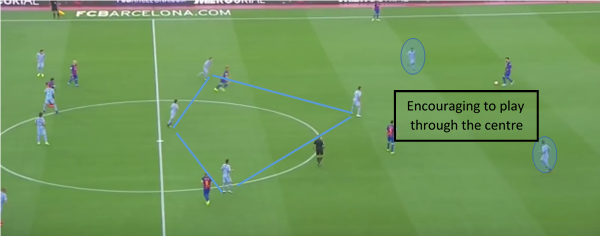
As it can be seen below, defending with a diamond in midfield can be effective to match up midfield three (i.e. in 4-3-3). This will prevent key midfield players getting on the ball and leave enough time to come across and press in case the ball is played wide. It also leaves one spare man – defensive midfielder who can screen passes into striker and mark him in case he decides to drop deeper.
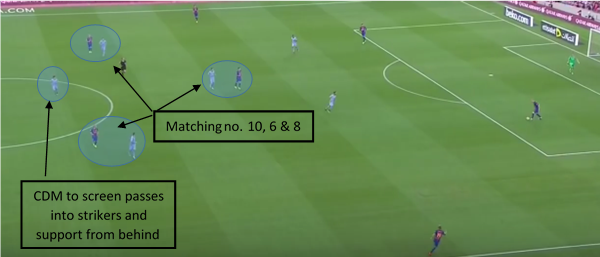
As the ball is played to the full backs, the role of the striker and midfield units is to come across and isolate opposition on one side of the pitch. When the ball is wide, defending with a midfield diamond creates a relatively narrow shape what can be exploited by the opposition using a quick switch of play.
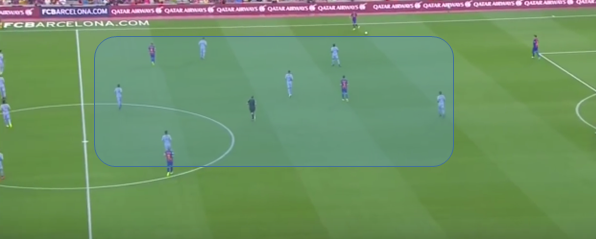
Responsibility of the nearest striker to the ball is to position himself between full back and centre back and cut the option to play backwards. Second striker in turn, drops deeper into midfield to overload central areas. Wide midfield on the ball side is responsible for pressing, whereas defensive midfielder cuts the option to play forwards.
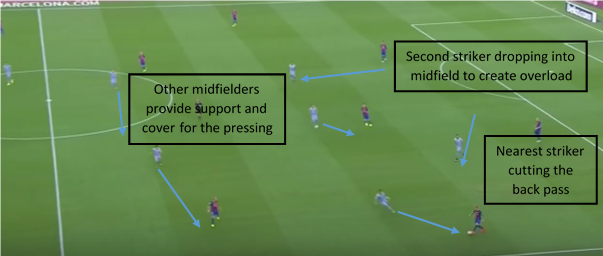
There will be times, however that the ball is played back into centre back and then switched across between them. In this situation the role of the second striker will be crucial who needs to curve his run to press and cut the option to visit opposite full back. This will allow midfielders to come across quickly enough and track the opposition players in central areas.
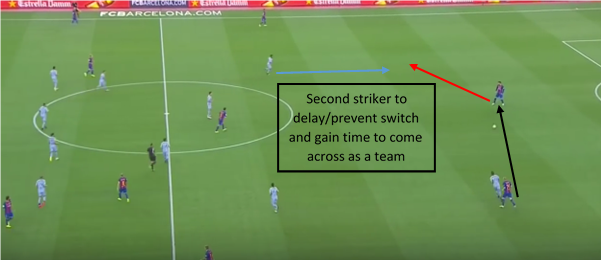
Opposition will be tempted to play centrally and this creates an excellent opportunity to win the ball and counter attack. In case the ball is intercepted in central areas, this will mean that at least two players (2 strikers) are in front of it. With opposition full backs being wide, it might create a 2v2 situation upon counter attack.
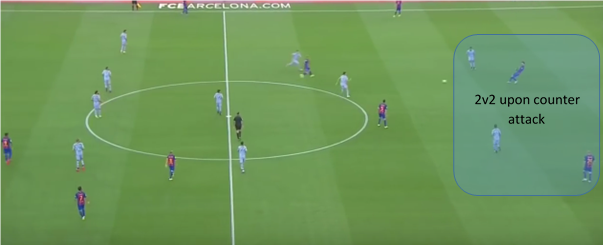
An important aspect to consider when choosing to play a diamond in midfield is how to cover gaps between wide midfielders and full backs when the ball is wide. One of the solutions might be playing with high pressing full backs. In order to allow this, a defensive midfielder might consider dropping in between the centre backs what will allow a team to have good protection centrally and give a licence for full backs to help wide players in pressing the ball.
By Alex Trukan, Development Coach, Nottingham Forest
@AlexTrukan

